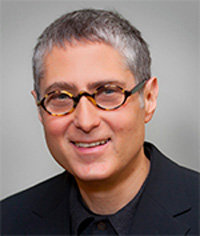New collection traces Holocaust victim’s trajectory from diarist to world icon
Anne Frank is perhaps the most instantly recognizable face of the Nazi Holocaust. If you haven’t read her diary in any of the 60 languages it’s been published in, you’ve likely seen it in play or movie form, or heard one of 100 musical adaptations, from oratorios to rock songs and ballet scores.
Perhaps you’ve gazed at one of many pieces of artwork based on her life, seen her in a Youtube video, climbed the stairs to the attic in Amsterdam where she hid during the Nazi occupation, reached out to touch her bronze statue in Boise, Idaho, or – oddly enough – visited her posthumous Facebook page.
In a new book, Anne Frank Unbound: Media, Imagination, Memory, Rutgers professor Jeffrey Shandler explores the process by which the jottings of an ordinary teenage girl grappling with the horrors of an extraordinary time became a touchstone for millions of people worldwide.
He and his co-authors call it the “Anne Frank phenomenon.”
“There has been a great deal of attention to Anne Frank’s life and work over the years, but the full extent of the sprawling response to her diary hasn’t received much attention before this,” says Shandler, a professor in Rutgers’ Department of Jewish Studies and president of the Association for Jewish Studies.
A scholar of modern Jewish culture, Shandler specializes in Holocaust remembrance, the ethnography of contemporary Jewish life and Yiddish culture.
He and co-editor Barbara Kirshenblatt-Gimblett invited a dozen academics from different disciplines to contribute essays exploring the trajectory that Anne Frank’s Diary of a Young Girl has taken since its first publication in Dutch in 1947.
An outgrowth of a colloquium convened in 2005 by the Working Group on Jews, Media, and Religion at New York University’s Center for Religion and Media, the collection is designed to appeal not only to scholars, but also to general audiences – “people for whom Anne Frank’s life and work figure as something important in their lives,” Shandler says.
On its face, The Diary of a Young Girl tells the story of the Frank family, whose members had moved from their native Germany to Amsterdam in 1933, the year the Nazis rose to power. Shortly after Anne began her diary at age 13, the family went into hiding in what became known as the “secret annex,” remaining there for more than two years until they were betrayed and arrested.
Anne and her sister, Margot, were eventually sent to Bergen-Belsen concentration camp, where both died shortly before the camp was liberated in April 1945. Only their father, Otto, survived the Holocaust.

Shortly after Otto Frank was given his daughter’s diary – once it was known that she was no longer alive – he decided to share it with others. Thus began a cascade of events involving Anne’s life and work, as the diary was “translated, sung, dramatized, filmed, rendered as a graphic novel or museum exhibition,” Shandler writes.
With the diary’s growing popularity, people around the world began seeing Anne Frank not only as an icon of her time but also as a human-rights advocate for all time.
In his own essay in the anthology, Shandler points out that when the diary was translated into Khmer, the language of Cambodia, the Dutch ambassador to that country suggested that “Anne Frank’s ordeal bears resemblance to the personal history of thousands of Cambodians who have suffered a similar fate at the hands of the Khmer Rouge during the reign of Democratic Kampuchea.”
Other essays in Anne Frank Unbound trace the evolution of the diary from page to stage, explore how the teenager inspired visual artists – including one who pictures Anne sporting an Obama T-shirt -- and outline the various genres of videos that pay her tribute.
Edward Portnoy, who teaches Jewish literature and Yiddish language at Rutgers, looks at the diary and its various iterations through a different lens. In his contribution to the collection, “Anne Frank on Crank: Comic Anxieties,” he reflects on the proliferation of jokes and parodies that reference the young writer and analyzes the wellsprings of this brand of dark humor.
“Portnoy is one of the best scholars I know who studies Jewish humor, especially in its thorniest, most provocative forms,” Shandler says. “Many people don’t want to acknowledge this aspect of the Anne Frank phenomenon, but his scholarly analysis helps us understand the motives behind this humor, which are key to understanding other contemporary responses to Anne Frank’s symbolic value.”
Sixty-five years after the diary was first published, its prominence shows no sign of diminishing, he adds. He doesn’t see that changing any time in the near future.
“Reading Anne’s diary has become a rite of passage for many adolescents. You see members of each generation wanting to make it their own – and theirs is not their parents’ take on it. It’s a deeply personal book that’s not only read, but inhabited, by millions,” the Rutgers scholar says.
Jeffrey Shandler will speak about his book Anne Frank Unbound on Monday, February 4, at 4:30 p.m. at the Douglass Campus Center. The program is sponsored by the Allen and Joan Bildner Center for the Study of Jewish Life.